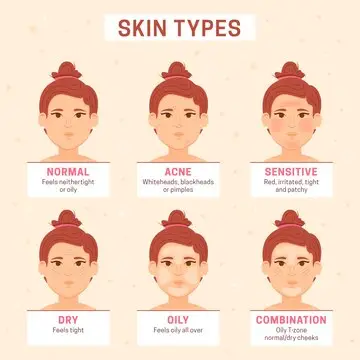Mastering Oily Skin Care on 12 Effective Tips for a Clear, Balanced Complexion

Introduction: Oily skin can be a blessing and a curse—while it’s naturally hydrated and less prone to wrinkles, excess sebum production can lead to shine, enlarged pores, and acne breakouts. However, with the right skincare routine and habits, you can manage oily skin effectively and achieve a clear, balanced complexion. In this article, we’ll explore a range of tips and techniques specifically tailored to care for oily skin.

Page Contents
Mastering Oily Skin Care on 12 Effective Tips for a Clear, Balanced Complexion
Understanding Oily Skin
Oily skin is characterized by Three (3) Factors:

- Excess Sebum Production: Oily skin produces an abundance of sebum, the skin’s natural oil, resulting in a shiny appearance, especially in the T-zone (forehead, nose, and chin).
- Enlarged Pores: Excess sebum production can cause pores to appear larger and more prominent, making the skin’s texture rough and uneven.
- Prone to Acne: Oily skin is more susceptible to acne breakouts due to clogged pores and the proliferation of acne-causing bacteria.

The Eight (8) Skincare Tips for Oily Skin:
- Cleansing: Cleanse your skin twice daily with a gentle, oil-free cleanser formulated specifically for oily skin. Look for cleansers containing salicylic acid or benzoyl peroxide, which help unclog pores and control oil production without over-drying the skin.
- Exfoliation: Incorporate exfoliation into your skincare routine 2-3 times per week to remove dead skin cells, excess oil, and debris that can clog pores and lead to breakouts. Opt for chemical exfoliants containing alpha hydroxy acids (AHAs) or beta hydroxy acids (BHAs), which penetrate the pores and dissolve excess sebum.
- Oil-Free Moisturizing: Even oily skin requires hydration to maintain its balance and prevent excessive oil production. Choose lightweight, oil-free moisturizers labeled as “non-comedogenic,” which won’t clog pores or exacerbate breakouts.
- Sun Protection: Protect your skin from UV damage by applying a lightweight, oil-free sunscreen with SPF 30 or higher every morning. Look for oil-free or mattifying formulas designed specifically for oily skin to avoid adding extra shine.
- Oil-Control Products: Incorporate oil-control products such as mattifying primers, setting powders, or blotting papers into your makeup routine to minimize shine and keep oiliness at bay throughout the day.
- Avoid Overwashing: While cleansing is essential for oily skin, overwashing can strip away the skin’s natural oils, leading to rebound oil production and potential irritation. Stick to cleansing twice daily and avoid harsh or abrasive cleansers that can disrupt the skin’s barrier.
- Use Oil-Absorbing Masks: Treat your skin to oil-absorbing masks once or twice a week to help draw out excess oil, minimize pores, and mattify the complexion. Clay masks containing ingredients like kaolin or bentonite are particularly effective for oily skin types.
- Hydrate Internally: Stay hydrated by drinking plenty of water throughout the day. Proper hydration helps regulate oil production and maintain skin health from within.
The Four (4) Techniques for Managing Oily Skin:
- Blotting: Keep oiliness in check throughout the day by gently blotting the skin with oil-absorbing sheets or tissues. Press the sheet onto oily areas to absorb excess oil without disturbing makeup.
- Spot Treatment: Treat acne breakouts and blemishes with targeted spot treatments containing ingredients like benzoyl peroxide, salicylic acid, or sulfur. Apply a small amount directly to the affected area to reduce inflammation and promote healing.
- Oil-Free Makeup: Choose oil-free or non-comedogenic makeup products that won’t clog pores or exacerbate oiliness. Look for water-based or mineral formulas labeled as “oil-free” or “matte” to keep shine under control.
- Regular Skin Checks: Monitor your skin regularly for changes or signs of irritation. If you notice persistent acne, excessive oiliness, or unusual reactions to skincare products, consult a dermatologist for personalized recommendations and treatment options.
Conclusion:
Managing oily skin requires a combination of effective skincare practices, products, and techniques tailored to control oil production, minimize pores, and prevent breakouts. By following these tips and techniques, you can achieve a clear, balanced complexion that looks and feels healthy and radiant. Remember, consistency is key—stick to your skincare routine and adjustments, and be patient as you find what works best for your oily skin.






